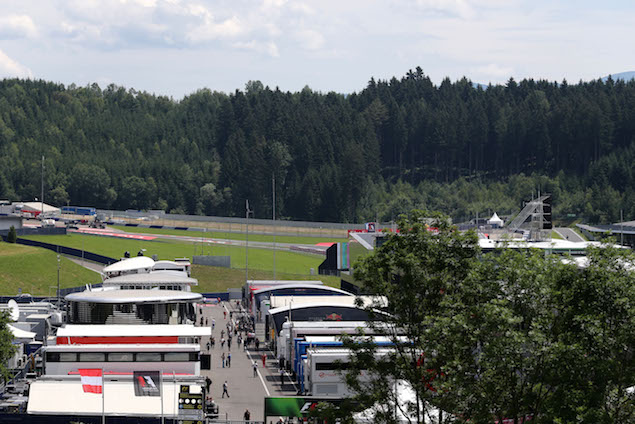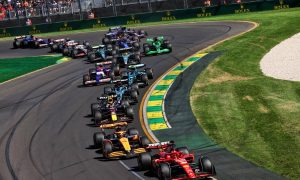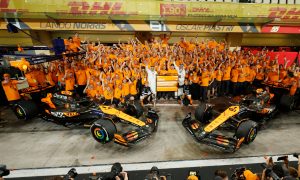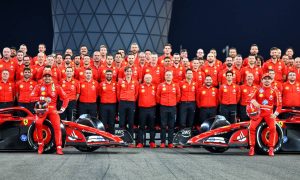Eric Silbermann speaks to Renault's Alan Permane and Rob Smedley of Williams to find out what goes on - or doesn't - during the F1 summer break

“We’re all going on a summer holiday,
no more working for a week or two.
Fun and laughter on our summer holiday.
No more worries for me or you,
for a week or two.”
Who’d have thought that way back in 1963, the great grandfather of English pop, Cliff Richard, invented the concept of the Formula 1 summer break. For a less musical but more thorough explanation of what the sport’s enforced holiday entails, read on.
The first thing to note about the two-week break, is that it actually takes place during a three-week gap in on-track hostilities, therefore teams must decide whether to take the break immediately after the German GP or return to work for one week first.
“It is not a big difference, although the factory-based staff tend to favour it being immediately after the last race, whereas the part of the team that travels favours having that first week to come back to strip the car,” says Renault’s Trackside Operations Director Alan Permane. “There are pros and cons of course. In the past, we have done both and on balance we take the option of working for a week and then having the next two weeks off.”
There’s another reason why all teams now tend to favour this timetable, as Williams’ Head of Performance Engineering, Rob Smedley points out: “Teams who took the break starting on the day after the last race missed out on being off work for one of the weekends of the three available and that led to complaints, which is why everyone has converged now.”

Working for a week after the last race prior to the break, brings the same piece of mind that came with doing all your homework at the start of the school holidays (so I’m told).
“It enables us to strip our cars from Germany, make sure there are no dramas or disasters with them and get everything serviced and ready, go away on holiday, come back and do the final build,” continues Permane. “Having the next race after the shutdown at Spa is very helpful as it’s so close. So we can come back from shutdown, work on the Monday and Tuesday and fly on the Wednesday and our cars can go in the transporters on Tuesday and be there at the track for Wednesday. There is no problem with the break as it applies to all the teams. The only thing that’s important in any competitive sport is where you are relative to the others. That’s the beauty of it, everyone stops and everyone starts again at the same time.”
The whole idea of the summer break came about a few years back, because the calendar kept expanding and team members with children of school age found it impossible to squeeze a family holiday in around the ever busier race schedule. However, it’s not popular with everyone.
“Views in the factory are a little bit mixed,” admits Permane. “Some people love it and others really don’t like it because they’re forced to take two weeks holiday then, which is a little bit old fashioned if you think about it. I sympathise with people who don’t have kids and are forced to take a holiday when it’s expensive. But especially for the race team with 21 races now, I cannot imagine going back to not having the break.”
In fact, 21 races is not the end of it, because now that teams no longer run a dedicated test team, mechanics and engineers face a year made up of 21 races, preceded by eight days of winter testing, four days of in-season testing, a tyre test and possibly a filming day too. It’s a really punishing schedule, even if everyone loves their job.

While work is forbidden in the two week period, with a few exceptions we’ll come to in an minute, there are no FIA ‘Thought Police’, so there’s nothing to stop engineers thinking about their work during the fortnight.
“I honestly think the break does help and I like it from that point of view,” reckons Smedley. “It does allow you some freedom of thought. Once you get into the season or any point during the year really, you’re flat out. So to be able to step away from it in those first three or four days, you’re happy to get some respite. Then obviously we live and breathe Formula 1. For most of us who work in it, it’s a vocation and yes, while you’re away and your mind is a bit more relaxed and you’re not thinking about the most immediate problem, you can come up with certain ideas and if I do, I jot them down in a notebook and when you come back to work, refreshed and rejuvenated, you can put those ideas into practice.”
Permane actually reckons this is the only true break of the year, when work cannot pile up while you’re away.
“If you have a holiday at any other time of year, you are constantly getting emails and your inbox is filling up. With the shutdown, you don’t get any, because everyone stops and your email is on autoreply. People who would normally be communicating with you are also on holiday.”

Out of the scope of the ban on work is anything related to the engine and various other factory tasks, but unlike parc ferme at a race weekend, when the FIA has cameras in each garage, there is no official policing of the ban.
“Formula 1 is a big enough industry that if one team carried on working, people would know about it and as people do change jobs between teams it would come out that someone had worked during the shutdown,” maintains Permane. “It’s a reasonably self-policing thing. What you are allowed to do is a fair amount of service and maintenance, things at the factory operationally. For example, you cannot use your wind tunnel, but excluded from that ban is any servicing or maintenance activity. Wind tunnels are running all year round within what’s allowed in the regulations and we don’t want to stop them for anything, but it means you have two weeks in the summer when you can take them apart give them a good clean, maintain and change parts and get them all ready for the future. It’s the same with the CFD and for example, during the summer break this year, at Renault, we are having a new CFD system installed which is perfectly within the regulations. The shutdown means we can do that without losing any time.”
The break is something teams now take in their stride.
“It’s a fairly simple process and there are certain legal aspects and minutiae we have to make sure are correct and everyone’s complied with, in terms of email usage and contact with each other, but its quite simple,” concludes Smedley. “We’ve got so many processes and procedures at Williams, we’re so streamlined and efficient and everyone knows what they’re doing. When we come back off the break, everyone knows what they have to do and you end up with a well organised streamlined operation. So if you have a two week break in the middle or a two year break it shouldn’t make any difference.”
Exclusive Marcus Ericsson Q&A on Sauber's brighter future
2016 technical review: Sun, sea and tech
Chris Amon: A legend's career in pictures
Keep up to date with all the F1 news via Facebook and Twitter






